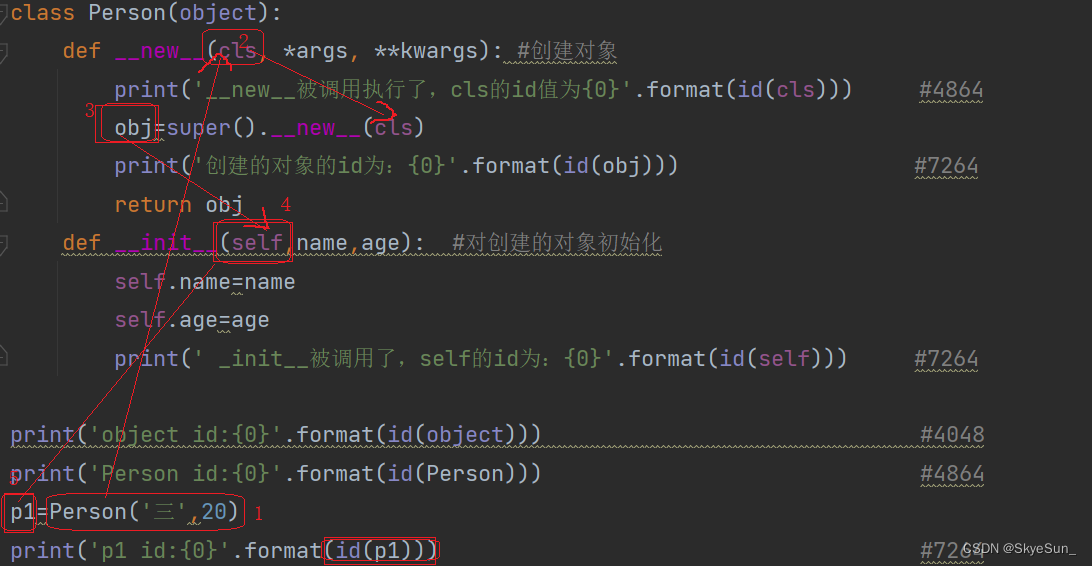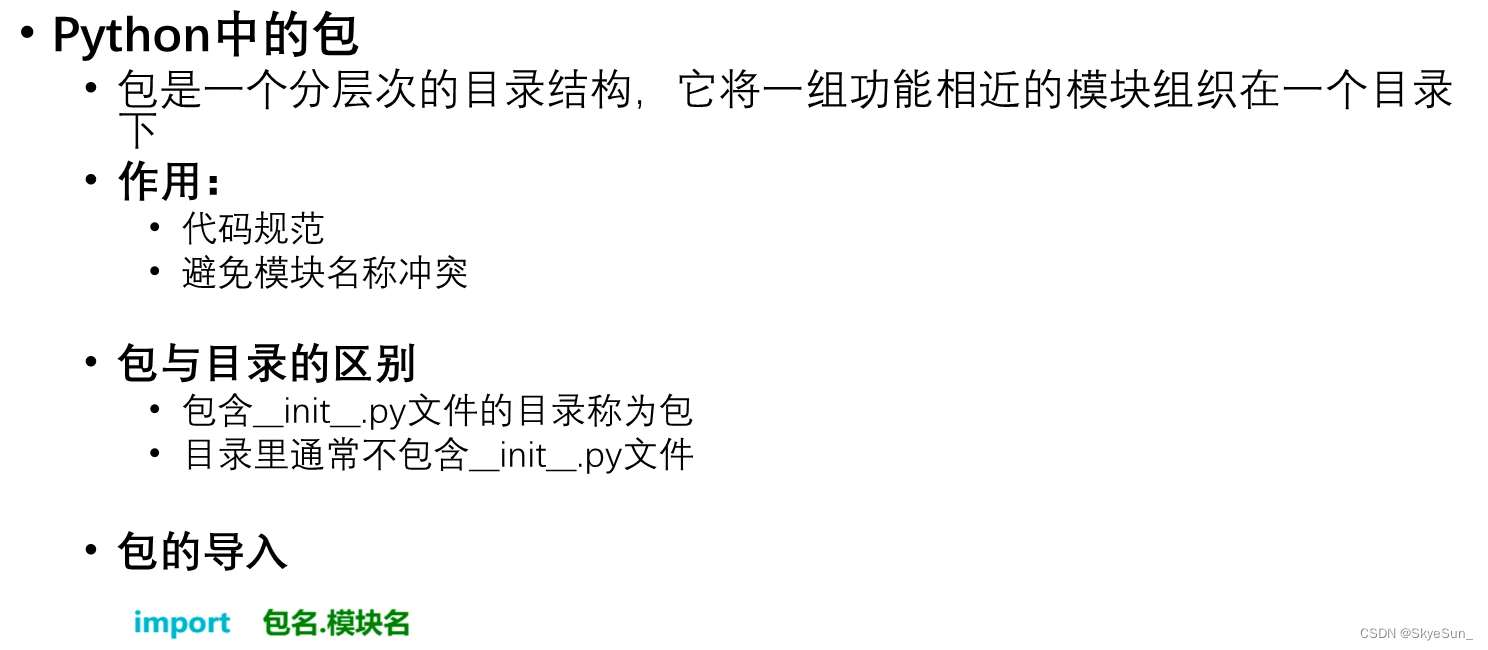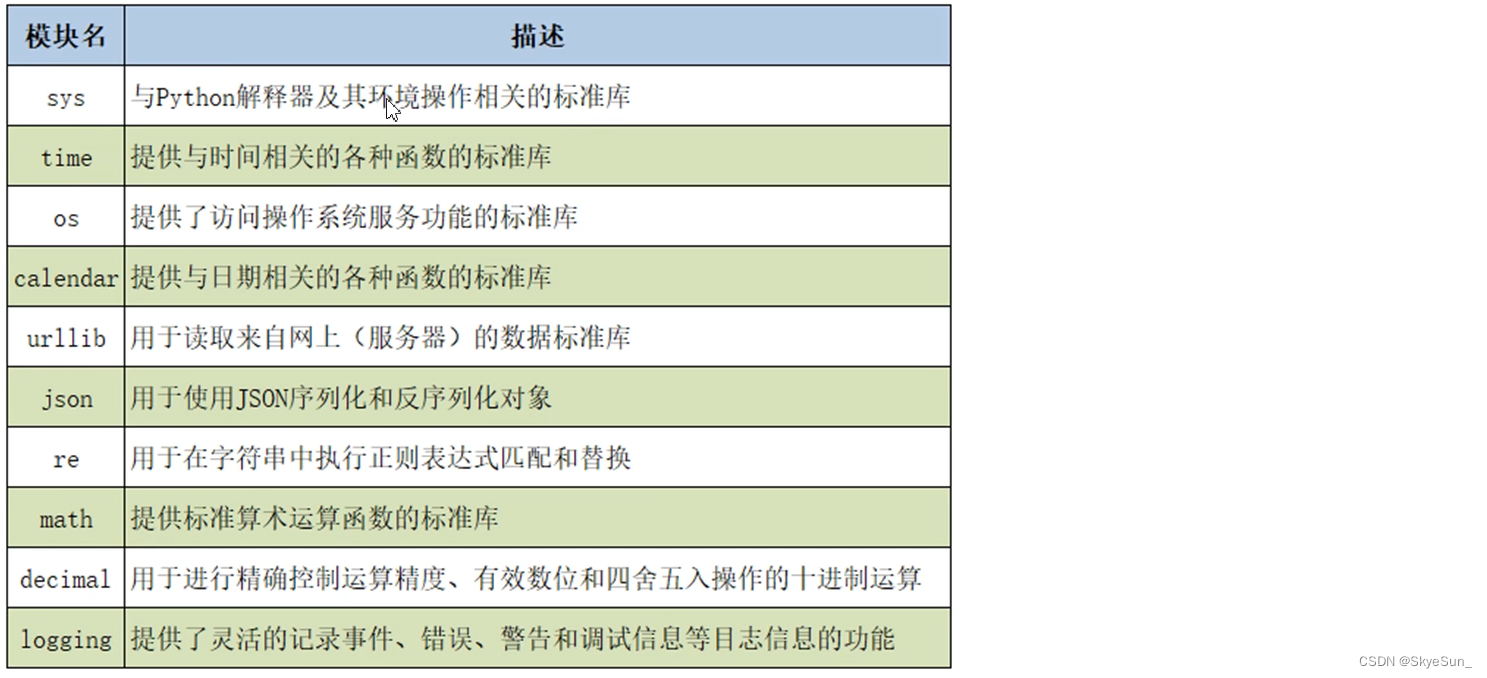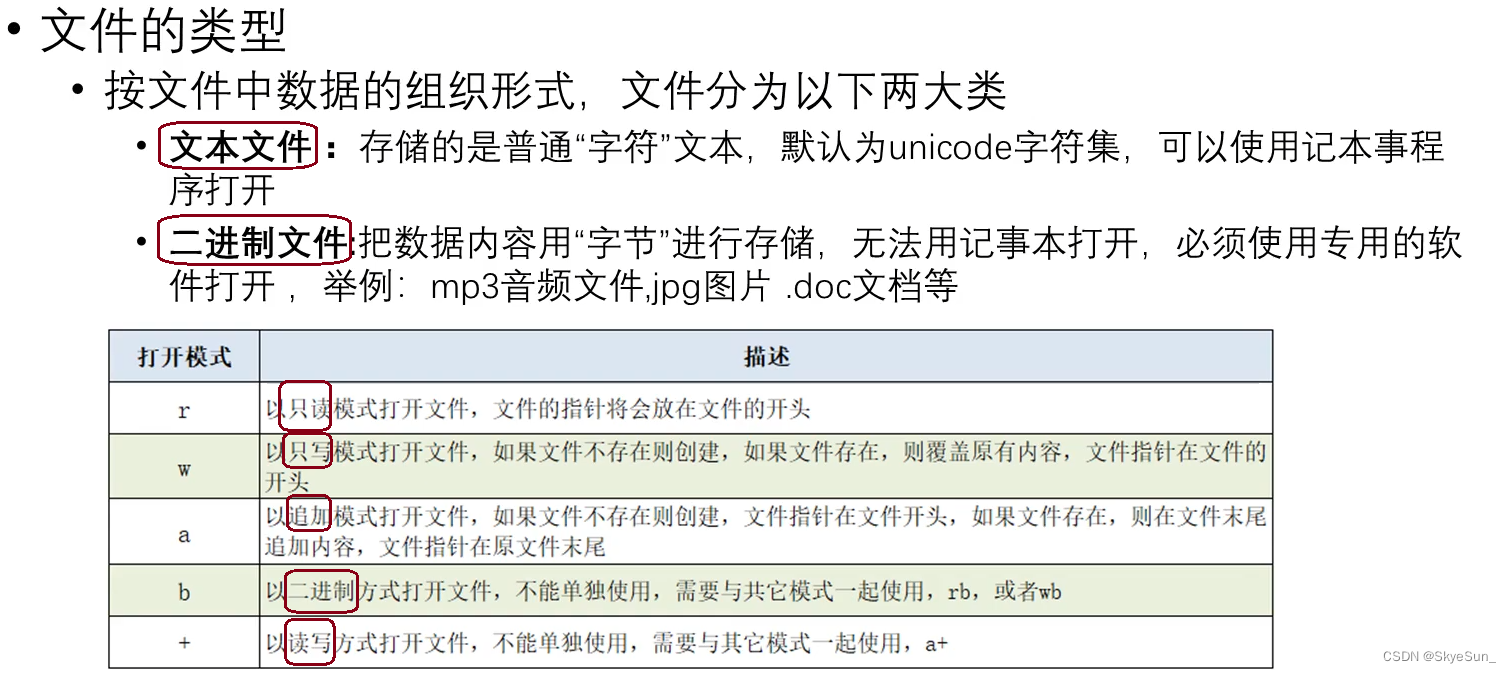目录
96-101 Bug



lst=[{'rating':[9.7,206287],'id':'129052','type':['剧情','犯罪'],'title':'肖申克的救赎','actors':['蒂姆.罗宾斯','摩根.弗里曼']}]
name=input('请输入你要查询的演员')
for item in lst:#遍历列表:{} item是一个又一个的字典
act_lst = item['actors']
for actor in act_lst:
if name in actor:
print(name,'出演了',item['title'])
# print(act_lst)
# for movie in item: #遍历字典,得到movie是一个字典中的key
# print(movie)
# actors=movie['actors']
# if name in actors:
# print(name+'出演了'+movie)
try:
a = int(input('请输入第一个整数'))
b = int(input('请输入第二个整数'))
result = a / b
print('结果为:', result)
except ZeroDivisionError:
print('除数不能为0!')
except ValueError:
print('请输入数字串!')
except BaseException as e:
print(e)
print('程序结束')
try:
a = int(input('请输入第一个整数'))
b = int(input('请输入第二个整数'))
result = a / b
except BaseException as e:
print('出错了,错误为:',e)
else:
print('结果为:', result)
print('程序结束')
# 请输入第一个整数a
# 出错了,错误为: invalid literal for int() with base 10: 'a'
# 程序结束
# 请输入第一个整数10
# 请输入第二个整数0
# 出错了,错误为: division by zero
# 程序结束
try:
a = int(input('请输入第一个整数'))
b = int(input('请输入第二个整数'))
result = a / b
except BaseException as e:
print('出错了,错误为:',e)
else:
print('结果为:', result)
finally:
print('谢谢您的使用')
print('程序结束')
# 请输入第一个整数10
# 请输入第二个整数3
# 结果为: 3.3333333333333335
# 谢谢您的使用
# 程序结束102 常见异类类型

103 traceback模块

import traceback
try:
print('1.____________')
num=10/0
except:
traceback.print_exc()104 pycharm调试


105 编程思想

106 类与对象

python中一切皆对象
107 类的创建

类的名称由一个或多个单词组成,每个单词的首字母大写,其余小写
类是对象,开辟内存空间
108 对象的创建
(这节课讲的很差,可能听不懂,需要继续往后听)

class Student:# Student称为类的名称
native_pace='吉林'#直接写在类里面的变量,称为类属性
def __init__(self,name,age):#name,age是实例属性
self.name=name
self.age=age
#实例方法
def eat(self):
print('学生在吃饭')
#静态方法,使用@staticmethod
@staticmethod
def method():
print('静态方法中不允许写self')
#类方法,@classmethod
@classmethod
def cm(cls):
print('类方法中传cls')
#在类之外定义的称为函数,在类之内定义的称为方法
stu1=Student('张三',20)
stu1.eat()
stu1.cm()
stu1.method()
print(stu1.name,stu1.age)
# 学生在吃饭
# 类方法中传cls
# 静态方法中不允许写self
# 张三 20
Student.eat(stu1)
# 学生在吃饭- 对象名.方法名()
- 类名.方法名(类的对象)
109 类属性、类方法、静态方法

print(Student.native_pace)#吉林
stu1=Student('张三',20)
stu2=Student('李四',30)
print(stu1.native_pace)
print(stu2.native_pace)
# 吉林
# 吉林
Student.native_pace='天津'
print(stu1.native_pace)
print(stu2.native_pace)
# 天津
# 天津
Student.cm()
Student.method()
# 类方法中传cls
# 静态方法中不允许写self110 动态绑定属性和方法


class Student:
def __init__(self,name,age):
self.name=name
self.age=age
def eat(self):
print(self.name+'在吃饭')
stu1=Student('张三',30)
stu2=Student('李四',40)
stu2.gender='男'
print(stu1.name,stu1.age)
print(stu2.name,stu2.age,stu2.gender)
# 张三 30
# 李四 40 男
def show():
print('定义在类之外,函数')
stu1.show=show
stu1.show()
(小声吐槽:这一章讲得。。。。。。懂也可能听不懂了)
110 面向对象的三大特征-封装

class Student:
def __init__(self,name,age):
self.name=name
self.__age=age
def show(self):
print(self.name,self.__age)
stu=Student('张三',20)
stu.show()
#在类的外部使用name和age
print(stu.name)
#print(stu.__age) print(stu.__age)AttributeError: 'Student' object has no attribute 'name'
print(dir(stu))
print(stu._Student__age)#在类的外部强制访问
#20111 面向对象的三大特征-继承

class Person(object):
def __init__(self,name,age):
self.name=name
self.age=age
def info(self):
print('姓名:{0},年龄:{1}'.format(self.name,self.age))
#定义子类
class Student(Person):
def __init__(self,name,age,score):
super().__init__(name,age)
self.score=score
#测试
stu=Student('Jack',20,'1001')
stu.info()
# 姓名:Jack,年龄:20112 方法重写

class Person(object):
def __init__(self, name, age):
self.name = name
self.age = age
def info(self):
print(self.name, self.age)
class Student(Person):
def __init__(self, name, age, stu_no):
super().__init__(name, age)
self.stu_no = stu_no
def info(self):
super().info()
print(self.stu_no)
class Teacher(Person):
def __init__(self, name, age, teachofyear):
super().__init__(name, age)
self.teachofyear = teachofyear
stu = Student('张三', 20, '10010')
stu.info()
# 张三 20
# 10010113 object类

class Student:
def __init__(self,name,age):
self.name=name
self.age=age
def __str__(self):
return '我的名字是{0},今年{1}岁了'.format(self.name,self.age)
stu=Student('张三',20)
print(dir(stu))
# ['__class__', '__delattr__', '__dict__', '__dir__', '__doc__', '__eq__', '__format__',
# '__ge__', '__getattribute__', '__gt__', '__hash__', '__init__', '__init_subclass__',
# '__le__', '__lt__', '__module__', '__ne__', '__new__', '__reduce__', '__reduce_ex__',
# '__repr__', '__setattr__', '__sizeof__', '__str__', '__subclasshook__', '__weakref__']
print(stu)
# <__main__.Student object at 0x0000016E05C38400>
# 我的名字是张三,今年20岁了 #默认调用__str__()这样的方法,重写了114 面向对象的三大特征-多态

Python是一门动态语言
class Animal(object):
def eat(self):
print('动物吃')
class Dog(Animal):
def eat(self):
print('狗吃')
class Cat(Animal):
def eat(self):
print('猫吃')
class Person(object):
def eat(self):
print('人吃')
def fun(animal):
animal.eat()
fun(Dog())
fun(Cat())
fun(Person())
# 狗吃
# 猫吃
# 人吃115 116 特殊方法和特殊属性

print(dir(object))
# ['__class__', '__delattr__', '__dir__', '__doc__', '__eq__', '__format__', '__ge__',
# '__getattribute__', '__gt__', '__hash__','__init__', '__init_subclass__', '__le__',
# '__lt__', '__ne__', '__new__', '__reduce__', '__reduce_ex__', '__repr__', '__setattr__',
# '__sizeof__', '__str__', '__subclasshook__']
class A:
pass
class B:
pass
class C(A,B):
def __init__(self,name):
self.name=name
x=C('Jack')
print(x.__dict__) #{'name': 'Jack'}
print(C.__dict__)#{'__module__': '__main__', '__init__': <function C.__init__ at 0x000001C1EF107700>, '__doc__': None}
print(x.__class__)#对象所属类<class '__main__.C'>
print(C.__bases__)#父类元组(<class '__main__.A'>, <class '__main__.B'>)
print(C.__base__)#基类元组<class '__main__.A'>
print(C.__mro__)#类的层次结构(<class '__main__.C'>, <class '__main__.A'>, <class '__main__.B'>, <class 'object'>)
print(B.__subclasses__())#子类[<class '__main__.C'>]a=20
b=100
c=a+b
d=a.__add__(b)
print(c)#120
print(d)#120
class Student:
def __init__(self,name):
self.name=name
def __add__(self,other):
return self.name+other.name
def __len__(self):
return len(self.name)
stu1=Student('张三')
stu2=Student('李四')
#print(stu1+stu2)TypeError: unsupported operand type(s) for +: 'Student' and 'Student'
print(stu1+stu2)#张三李四
#实现了两个对象的加法运算,在类中编写了add特殊的方法
print(len(stu1))#TypeError: object of type 'Student' has no len()
#2 在类中编写了len特殊的方法,return len(self.name)
117 _new_ / _init_

class Person(object):
def __new__(cls, *args, **kwargs): #创建对象
print('__new__被调用执行了,cls的id值为{0}'.format(id(cls))) #4864
obj=super().__new__(cls)
print('创建的对象的id为:{0}'.format(id(obj))) #7264
return obj
def __init__(self,name,age): #对创建的对象初始化
self.name=name
self.age=age
print(' _init__被调用了,self的id为:{0}'.format(id(self))) #7264
print('object id:{0}'.format(id(object))) #4048
print('Person id:{0}'.format(id(Person))) #4864
p1=Person('三',20)
print('p1 id:{0}'.format(id(p1))) #7264
# object id:140709592514048
# Person id:2701662344864
# __new__被调用执行了,cls的id值为2701662344864
# 创建的对象的id为:2701663637264
# _init__被调用了,self的id为:2701663637264
# p1 id:2701663637264118 类的赋值与浅拷贝

119深拷贝
#类对象的赋值操作,形成两个变量,实际上还是指向同一个对象
cpu1=CPU()
cpu2=cpu1
print(cpu1)
print(cpu2)
# <__main__.CPU object at 0x0000021A25626FD0>
# <__main__.CPU object at 0x0000021A25626FD0>
disk=Disk()
computer=Computer(cpu1,disk)
import copy
computer2=copy.copy(computer) #浅拷贝,对象包含的子对象内容不拷贝
computer3=copy.deepcopy(computer) #深拷贝,递归拷贝对象中包含的子对象
print(computer,computer.cpu,computer.disk)
print(computer2,computer2.cpu,computer2.disk)
print(computer3,computer3.cpu,computer3.disk)
# <__main__.Computer object at 0x000002281D258F70> <__main__.CPU object at 0x000002281D258FD0> <__main__.Disk object at 0x000002281D258FA0>
# <__main__.Computer object at 0x000002281D258820> <__main__.CPU object at 0x000002281D258FD0> <__main__.Disk object at 0x000002281D258FA0>
# <__main__.Computer object at 0x000002281D258730> <__main__.CPU object at 0x000002281D258430> <__main__.Disk object at 0x000002281D258460>

120 模块化编程的好处

121 模块的导入

import math
print(id(math))
print(type(math)) #<class 'module'>
print(math) #<module 'math' (built-in)>
print(math.pi) #3.141592653589793
print('==================')
print(dir(math))
print(math.pow(2,3),type(math.pow(2,3))) #8.0 <class 'float'>
print(math.ceil(9.324)) #10
print(math.floor(32.435)) #32122 以主程序方式运行

main+回车 快速输入:if __name__ == '__main__':
#只有点击运行本身模块时才运行if __name__ == '__main__':下面的代码,import时不会执行
123 python中的包

使用import方式进行导入,只能跟包名或模块名
使用from...import方式进行导入,可以导入包、模块、函数、变量
import pageage1
import calc
from pageage1 import modulea
from pageage1.modulea import a124 常用的内容模块

125 第三方模块的安装与使用

126 编码格式的介绍

127 文件读写的原理

类似队列先进先出
128 常用的文件打开模式


129 文件对象的常用方法

130 with语句

with open('logo.png','rb') as src_file:
with open('copy2logo.png','wb') as target_file:
target_file.write(src_file.read())131 os模块的常用函数

132 os.path模块的常用方法
























 3470
3470











 被折叠的 条评论
为什么被折叠?
被折叠的 条评论
为什么被折叠?








